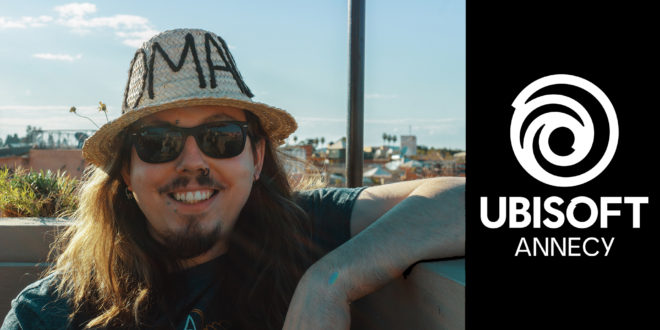Alexis Argyriou, lead level artist at Ubisoft Annecy, tells us about the importance of learning by yourself and what type of studio you should target for your first job.
What is your job role and how would you describe your typical day at work?
I am the lead level artist at Ubisoft Annecy, so I’m responsible for the team of artists working on maps, environments, and everything else related to the game world.
In the past few years our jobs started to be very specialised: level art teams now include texture artists, lighting artists, 3D props artists, environment artists… My job is to keep this department running: I need to minimise dependencies between artists, manage deadlines, expectations and deliverables, balance the workload and keep my team satisfyingly challenged every day.
My job is also to represent the art team in management meetings to discuss budgets, staffing and co-development situations.
I often start the day with the lead level designer, discussing how we could make the map better by using each other’s skills for art and design. In fact, we are promoting this attitude within the studio: designers and artists are sitting right next to each other, cooperating and sharing feedback. This iterative back and forth is the secret to all best game levels. I do not have a typical day – and I love that.
What qualifications and/or experience do you need to land this job?
I have a degree in 3D Art for Games, but some of my team do not have degrees at all. Nowadays all resources necessary to land a job in the industry are on the internet. If you are willing to spend a lot of hours learning by yourself, watching tutorials and working a lot on your art, your portfolio will improve.
For a first job, I always suggest looking for a newish, mid-size studio with big ambitions. I started in such place, and I had the freedom to experiment with all the over-the-top, way too complex levels my mind could think of.
This freedom to try and fail, and most importantly to learn from my failures, made me able to handle pretty much any situation afterwards. Growing through the hierarchy in game art is surprisingly not so correlated with your artistic skills. As a lead artist you are judged by your teams’ ability to deliver high quality content on time. Your job is to facilitate their job. It’s good to start working on your communication skills early on!
Lastly, curiosity is king. Try to understand all facets of game development. Talk to programmers, sound designers, animators and 3D engineers: they all have bits of knowledge very useful for your career.
What opportunities are there for career progression?
Lead artists can continue their career in two very different paths: either they choose to develop and express their artistic vision by becoming art directors, or they follow the appeal of management and production by becoming art managers. This is a big career crossroad for lead artists.
Art directors can then mature their vision to encompass all creative fields, not only artistic, and become creative directors. On the other side, art managers’ sphere of influence will eventually grow outside of the art department – they will have a more multiskilled and central role to support the production. They could become production managers or producers.
Want to talk about your career and inspire people to follow the same path? Contact Marie Dealessandri at marie.dealessandri@biz-media.co.uk

 MCV/DEVELOP News, events, research and jobs from the games industry
MCV/DEVELOP News, events, research and jobs from the games industry




